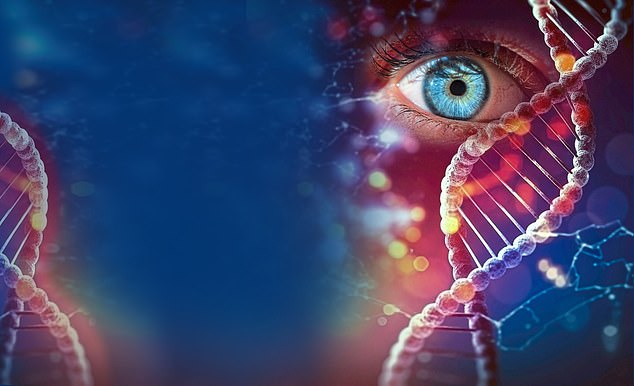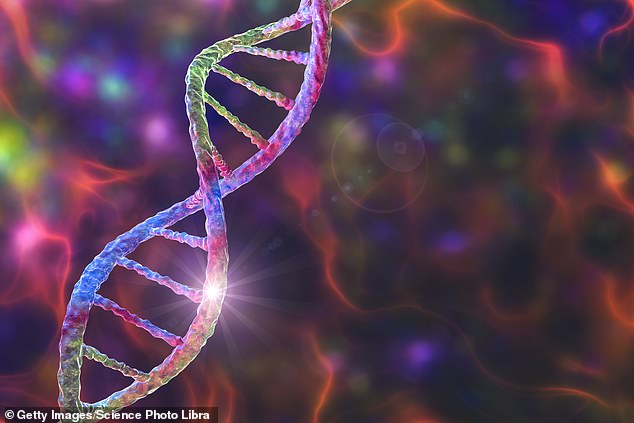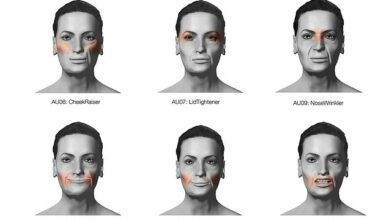The £1.7 billion wave of new NHS drugs that could alter our DNA to beat heart disease, cancer and even blindness… and are already curing patients




Drugs that can edit and rewrite DNA will solve problems like high cholesterol and blood cancer, in what experts say is the biggest medical breakthrough since the advent of antibiotics.
The groundbreaking treatment has already been used to treat a number of previously incurable conditions, for example. Earlier this month, the NHS pledged to roll out a £1.7m therapy for patients with a rare blood disorder – with more on the way.
The Mail on Sunday can reveal that drugs for hereditary heart disease, leukaemia and urinary tract infections have shown ground-breaking results in trials and could be available to millions of patients within just three years.
“Genetic editing therapies are the future of medicine,” said Professor Robin Lovell-Badge, a geneticist at the Francis Crick Institute. “If they really do provide a cure for these diseases – and all the hope is that they will – they will be a one-time treatment that will last a lifetime. We could give patients their lives back.”

One patient who has already benefited from gene editing therapy is 31-year-old Elliot Mason, who was born with severe hemophilia B
But as these drugs become more common, other experts are raising concerns about their safety – and the impact of genetic modification on future generations.
One patient who has already benefited from gene editing therapy is 31-year-old Elliot Mason, who was born with severe hemophilia B. This rare inherited blood clotting disorder was made famous by Russia’s Romanov royal family and three children of Queen Victoria.
It meant Elliot’s body couldn’t make enough of a crucial protein that helps blood clot after injury. Growing up, he couldn’t play certain sports for fear of injury and needed three injections a week to keep his clotting levels high enough.
‘Managing my condition on a daily basis was very stressful for me as a teenage boy,’ said Elliot, from London. ‘I was always having to go to my medication and having needle sticks in my arms.’
Six years ago he was given the opportunity to take part in a gene therapy trial at the Royal Free Hospital in North London.
“After a few weeks of paperwork and testing, I finally got to the appointment. They gave me an IV that lasted a little less than an hour,” he explained.
‘I didn’t feel any physical effects at the time, but within the first month the levels of the blood clotting protein in my liver started to rise.
‘Since then I don’t need any medication anymore. I don’t even think about my condition anymore.’
What are these drugs that can locate and remove tiny errors in DNA? And why are they controversial?

Drugs that can edit and rewrite DNA will solve problems ranging from high cholesterol to blood cancer, heralding what experts are calling the biggest medical breakthrough since antibiotics.
Scientists have been working to cure genetic diseases by modifying patients’ cells since the 1960s. But it’s only in the last decade that gene editing has really taken off, fueled by the discovery of the CRISPR-Cas9 system. CRISPR—clustered regularly interrupted short palindromic repeats—allows cells to manipulate stretches of defective DNA.
The technology is often compared to molecular scissors, which can detect a specific strand of DNA and cut off pieces of it.
Researchers have discovered that many forms of bacteria use a protein called Cas9 to fight invading viruses. It does this by penetrating the virus and breaking its DNA, neutralizing its attacks.
After years of research, scientists have managed to reproduce and control this protein for use in the human body.
This is done by inserting the protein into a harmless virus that then seeks out the defective DNA strands. In laboratory tests, they were able to detect and replace the abnormalities in patients’ DNA that caused genetic disorders such as sickle cell disease.
cell anemia and hemophilia. When CRISPR was used in human trials with thousands of patients, it was shown to be safe and highly effective.
And unlike existing treatments – which often require regular hospital visits and lifelong medication – gene editing therapies can be delivered in a single transfusion.
The revolutionary new treatment for the blood disorder beta-thalassaemia, which has been approved by NICE, the NHS regulator, despite a £1.7million price tag, uses CRISPR technology to correct errors in the genes responsible for producing haemoglobin, the protein in red blood cells that carries oxygen around the body.
Patients with the condition can’t make enough hemoglobin, meaning their vital organs are starved of oxygen, potentially leading to early death. But more than nine out of 10 patients given the new CRISPR drug – known as Casgevy – saw their hemoglobin levels rise to healthy levels.
“It’s amazing to think that these methods were only discovered in 2012. In just 12 years we have clinical trials and treatments that are now approved,” Professor Lovell-Badge said.
‘Each case is complex. These are very expensive treatments because of all the requirements that are necessary to guarantee their safety.
“But gene editing is absolutely the way forward.”
More than 150 trials are currently using the technology to treat conditions ranging from eye deterioration to metabolic diseases. And while not all trials will ultimately be successful, some are likely to be, Professor Lovell-Badge said.
“We will see more applications being approved by regulators over the next three years, and this number will gradually increase,” he said.
And it’s not just inherited genetic conditions that CRISPR technologies could potentially cure. “There are scientists working on treatments to eliminate HIV and certain cancers using similar methods,” Professor Lovell-Badge said.
Blood cancers in particular hold great potential for CRISPR cures. A 13-year-old girl with “incurable” T-cell leukaemia became the world’s first patient to receive base-edited cells in 2022, at Great Ormond Street Hospital in London. Alyssa, from Leicester, had undergone all conventional therapies, including chemotherapy and a bone marrow transplant.
With no other options, doctors injected her with genetically modified T cells – white blood cells that protect the body from infection – from a healthy donor that had been reprogrammed to seek out and kill the cancer cells in her system.
Just 28 days later, Alyssa was in remission.
Now 15, she is cancer-free and grateful for the “amazing” trial that saved her life. She said: “I’m so happy to be here now. It’s not only that I can do all these things that I thought I would never be able to do again, but I can give other people hope.”
Other promising treatments being investigated include using CRISPR to cure a genetic form of high cholesterol called familial hypercholesterolemia. This life-threatening condition, which dramatically increases the risk of heart attacks and strokes, affects around 220,000 people in the UK. Fewer than a tenth of patients realise they have it.

While trials like these promise astonishing results, some experts remain skeptical about the safety of gene editing therapies
Radical new drug Verve-101 promises to permanently lower cholesterol by removing an inherited defect that causes extremely high levels of the fatty substance in the blood. In early human trials, scientists hope the drug will be available in the UK by 2028.
Although these types of studies promise astonishing results, some experts remain skeptical about the safety of gene therapies.
Dr Tony Lockett, a rare disease expert and lecturer at King’s College London, believes CRISPR carries a number of serious risks. He claims that introducing genetically modified cells into the body could increase the risk of cancer. There is also the danger that the virus used to deliver CRISPR could harm the patient.
In 1999, Jesse Gelsinger, an 18-year-old participant in a U.S. gene therapy trial, died. He had a genetic liver disease and died in reaction to the cold virus used in his treatment.
Any gene editing therapy also carries the risk of mosaicism, a potentially fatal condition that occurs when a person has two or more genetically different cells in their body.
Finally, any drug that treats cells in the bone marrow—as Casgevy does—requires that existing bone marrow cells be eradicated before the new cells are added back in. To do this, patients are given drugs that can sometimes cause infertility and also make them very sick.
“In areas like motor neurone disease and dementia, where life expectancy is low and quite miserable, the risks are not as great,” Dr Lockett explains.
“But it begs the question: How severe does the disease have to be before we risk giving the patient a gene-modifying treatment?”
In the future, questions about the ethics of using CRISPR technology could become even more complex. In 2019, a Chinese scientist was jailed for genetically modifying twin babies, but experts
say gene editing in babies before birth could become commonplace in the UK as the therapy also gains popularity in adults.
‘We will soon have a number of patients who have successfully undergone gene editing treatment themselves, but who can still pass on the defective genes to their children,’ Professor Lovell-Badge said. ‘So in the future there will be much more demand for heritable gene editing than there is now.’
Dr Lockett admitted that offering the drug to patients will sometimes be a difficult decision: ‘It’s a great technology, but it also raises safety and economic issues that may prevent gene editing therapies from really taking off.’
Whatever the good or bad, former hemophilia B patient Elliot Mason feels fortunate to have undergone gene editing. “It’s a huge mental burden that’s been lifted,” he said. “Going through the treatment is one of the best things I’ve ever done.”




